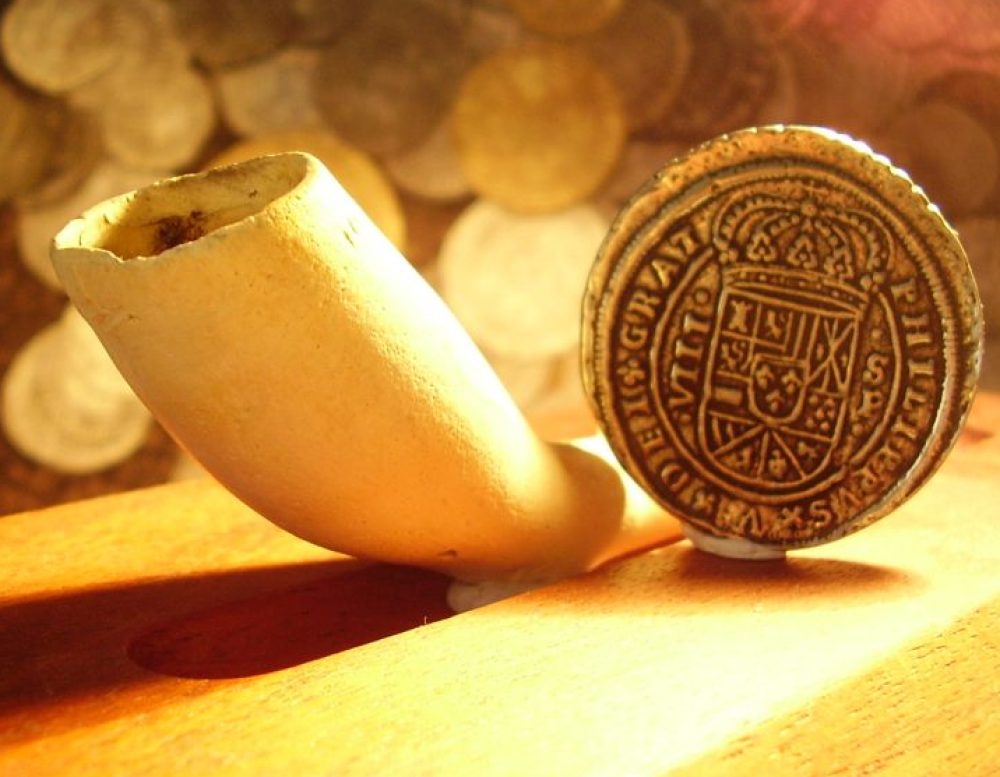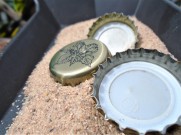So said the legendary Baseball player, coach, and manager, Lawrence ‘Yogi’ Berra. If you’re the kind of Tekkie who likes to wander onto a beach and search in a random manner trusting to Lady Luck, well, there’s nowt wrong with that. But if you’d like to take things a stage further then you’ll need to be aware of, and understand, two crucial methods of attack. The fundamental route to success is based on two observable facts, Longshore Drift, and those popular areas of beach in the dry sand known as the ‘towel line’.
We’ll start with Longshore Drift
This is the name given to the directional movement of coastal material, rocks, shingle, pebbles, and sand along the beach. Included with this material are coins, rings, and jewellery of all kinds.
Waves rarely if ever, hit the beach head-on, but at an angle often governed by the prevailing wind direction. As a wave heads for the shoreline and enters shallower water its base scours the seabed, and dependent of the power of the wave, scoops up and moves whatever is on the seabed inshore.
As the wave ‘breaks’ on the beach at an angle, whatever has been scooped-up is dropped – according to weight – when the broken wave drops back to seaward at a ninety-degree angle to the beach. In effect, beach sediment, including coins and jewellery, move along the beach in a zig-zag pattern. The trick is knowing which way.
If the beach you are searching has a series of groynes, then calculating the direction of longshore travel is simple. Look at the beach between two groynes. If say, the groyne to your left has beach sediment piled higher than the one to your right, then the longshore directional drift is right to left. This indicates the beach sediment has been scoured out from the base of the right-hand groyne, moved left and prevented from continuing its leftwards journey by the left-hand groyne.
Where to search
Never ignore the lowest side of a groyne. Here the waves have done the digging for you and it’s this side that will nearly always bring up the older material. In my experience, searching the higher side of the groyne is often like the Curate’s egg.
Bearing in mind that coins drop from a breaking as it travels up the beach according to weight, so don’t be surprised when you find the similar coin denominations along roughly the same line parallel to the beach. I recall searching a cove in the Channel Islands many years ago and hit the 50p coin line.
Of detectors…
I’ll make it clear from the outset that I’m not in business of rubbishing or downplaying one manufacturer against another. Nor am I on any manufacturer’s payroll. My own preference for equipment is based on nearly five decades’ experience and the environment in which I’m going to use it.
If you’re going to be serious about beachcombing then whatever detector you choose or use, must at the very minimum, be water resistant enough to withstand an unintentional dunking. At the next level, it ought to be rated at IP68, that is able to withstand water pressure at a depth of 5-metres.
My current beachcombing armoury consists of a Nokta Legend with assorted coils sizes and a Nokta Simplex+, both of which meet those standards. Remember, water and electronics make a poor cocktail.
…And coils
Away from the junk-laden towel line, large diameter coils do the biz. Where possible and allowing for budgetary considerations, always opt for a ‘Double D’ pattern coil which offers vastly improved target separation over the slightly deeper penetrating concentric pattern coils.
‘Double D’ coils also have the advantage of being less susceptible to ground effect, an important consideration when hunting in or near saltwater and the metallic content held in dilute suspension therein.
I’ve equipped my Legend with the Nokta LG30 (12”x 9”) elliptical coil for searching the lower sections of the foreshore for the primary reasons of increased ground coverage and improved target separation over the standard ‘Double D’ LG28 (11”) circular coil. The smaller LG15 (along with the LG24) will be discussed in Part Two.
and improved target separation over the standard ‘Double D’ LG28 (11”) circular coil. The smaller LG15 (along with the LG24) will be discussed in Part Two.
Nokta also produce the huge LG35 (13.5” X 12.5″) coil, but not having used one cannot comment on its performance, though the anecdotal evidence I’m hearing suggests it’s a winner.
In the meantime,
Happy and lucrative hunting
…………………………………………..




Good read Bubba, but I had to look up the word groyne….
When you said “Never ignore the lowest side of a groyne…” I thought jeez I’m 82 years old and have never, ever ignored my lower groyne and still worry about it.
LikeLike
It’s an age thing Ole Pal. I now think at my age, ‘sex’ is what posh English people put their coal in!
LikeLike